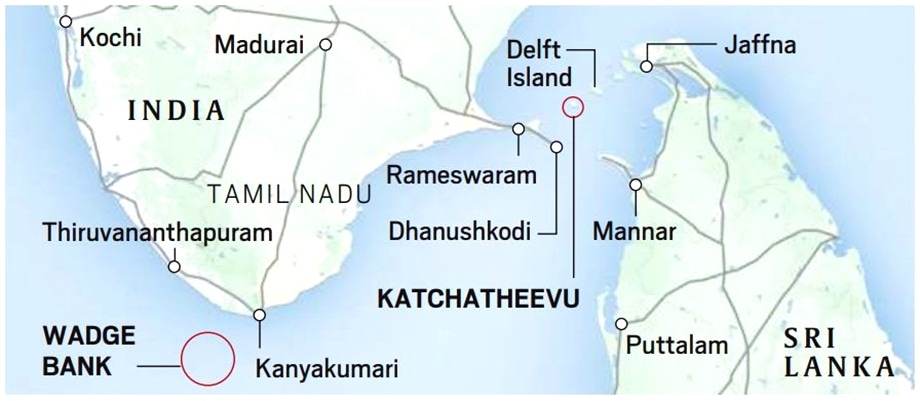Why in the News?
Sri Lankan President Dissanayake’s visit to Katchatheevu Island, the first ever visit by a head of state, revived debates on the island’s history and ownership.

About Katchatheevu Island:
- Overview: Small uninhabited island of about 285 acres in the Palk Strait, ~33 nautical miles from Jaffna (Sri Lanka) and close to Ramanathapuram (Tamil Nadu).
- History: Once under the Raja of Ramnad (TN), later became disputed during British rule.
- Agreements: Under 1974 and 1976 pacts, India (under Indira Gandhi govt.) recognised Sri Lanka’s sovereignty and gave up traditional fishing rights.
- Religious Site: Home to St. Anthony’s Catholic Shrine, visited annually by Indian and Sri Lankan fishermen during a joint festival with visa waiver.
- Ecology: Though barren and unsettled, serves as a resting point for fishermen and supports marine biodiversity.
Disputes around Katchatheevu:
- Fishing Conflicts: Tamil Nadu fishermen often cross into Sri Lankan waters due to declining catch in Indian waters, leading to frequent arrests by the Sri Lankan Navy.
- Bottom-Trawling Issue: Indian trawlers use bottom-trawling, banned in Sri Lanka, which damages marine ecosystems and escalates tensions.
- Political Demands: All TN political parties have demanded retrieval of the island.
- National Politics: Issue often resurfaces during elections, with claims that earlier governments “easily gave away” Katchatheevu.
- Official Position: India clarified in 2013–14 that no sovereign territory was ceded since the island was disputed, not fully under India’s control.
- Core Problem: Lies not in sovereignty but in unsustainable bottom-trawling practices and the livelihood crisis faced by Tamil Nadu fishermen.
| [UPSC 2020] Consider the following statements:
1. The value of Indo-Sri Lanka trade has consistently increased in the last decade. 2. “Textile and textile articles” constitute an important item of trade between India and Bangladesh. 3. In the last five years, Nepal has been the largest trading partner of India in South Asia. Which of the statements given above is/are correct? (2020) Options: (a) 1 and 2 only (b) 2 only* (c) 2 only (d) 3 only |
Get an IAS/IPS ranker as your 1: 1 personal mentor for UPSC 2024

